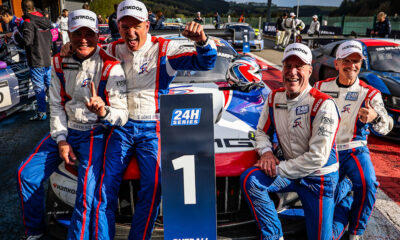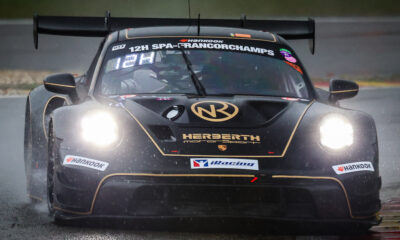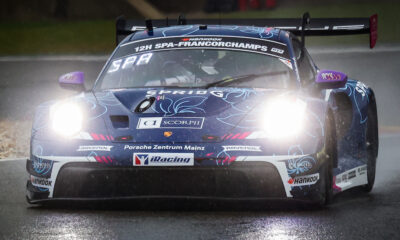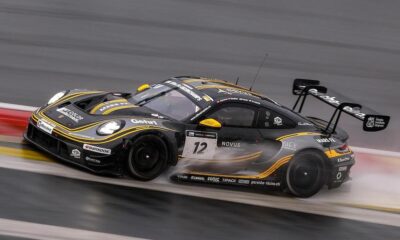
Photo: 24H Series
The Hankook 24H Series will abandon its current GT and TCE divisions in favor of a new class system as part of significant changes to the sporting regulations for the 2024 season.
Announced Tuesday, series organizer Creventic confirmed a host of changes for next season, including a new class structure as well the removal of driver lineup requirements, a testing ban and changes to the penalty system.
Most notably, the series will do away with the split GT-TCE division structure that had been in place since 2016. As a result, 24H Series races will feature a single overall polesitter, one overall race winner and a combined starting grid.
Instead, TCE will transform into a separate class, acting as an overarching category for entries from TCR, TCCR, TCX and TC. Both TCE and each individual class will have their own classification and rankings.
TCCR is a new-for-2024 addition to the series, meant for cars specifically powered by a turbocharged 2-liter engine that do not necessarily adhere to the TCR technical specifications.
Teams and drivers will be required to compete in at least three rounds for championship eligibility, which is one more than in previous years. The ‘scratch result’ rule remains in place, with each team’s lowest scoring event removed from their championship total.
Organizers have also moved to remove driver lineup requirements for teams competing in the GT3 and 992 classes.
Teams can now choose their class regardless of the lineup and only need to abide by drive time requirements. They will be required to confirm their sub-class ten days before the event.
The overhaul of the driver ratings system is paired with new Balance of Performance regulations, chief of which is the introduction of a so-called ‘Am-Advantage’ system for the 922-Am class. The series introduced a similar system for GT3-Am several years ago.
To keep parity for Semi-Pro and Pro lineups, teams running a lineup solely consisting of amateurs drivers in 992-Am will be able to benefit from performative Code 60 fuel-flow rates.
While each team must feature a minimum of two and maximum of five drivers, the previously existing limit of two Pro drivers per car have been removed.
Teams competing in each class except for GT3-Pro and 992-Pro will still be required to field at least one Am or Am+ driver. If a team runs without any Am drivers, they will not be allowed to include a Pro driver in the lineup and will run with Semi-Pro BoP restrictions.
Minimum driving times for ‘gentlemen’ competitors have also been clarified, with Am drivers now required to complete one-twelfth of the initially stated race duration.
If a race is red flagged, maximum driver times will not be adjusted and teams must abide by the initially stated race distance.
Code 60 Rules Changed, Drive Through Penalties Introduced
Code 60 rules have also received several revisions in an effort to “keep strategic gamesmanship fresh without artificially affecting race results.”
Refueling rates under Code 60 have been cut in half from 50 percent to 25 percent, while the fuel allocation will change if the track state changes while a team is refueling. This is a change from previous years, where the fuel rate remained constant regardless of track conditions once refueling had begun.
Notably, teams will no longer be allowed to start to serve a penalty under Code 60 and will instead be required to do so under green flag racing.
Under previous regulations, time penalties could be served during a neutralization, albeit with the time doubled in lieu of reduced speeds on-track.
Under the new rules, teams already serving a penalty when a Code 60 is called may continue to do so without reprimand.
Additionally, time penalties of five seconds or longer must now be served in the penalty box before the checkered flag is thrown, removing the possibility of teams adding smaller penalties to their overall race time post-event.
The series will also introduce drive through penalties for track limit violations for the first time.
Organizers have also stated that teams registered for a 24H Series race will no longer be allowed to test their car or similar model at the same circuit in the seven days leading up to the event.

























